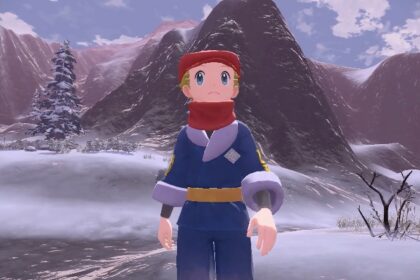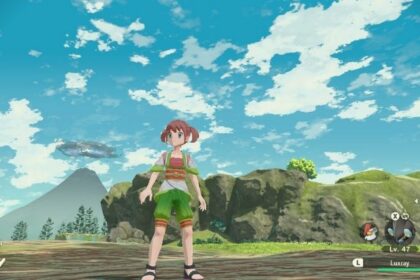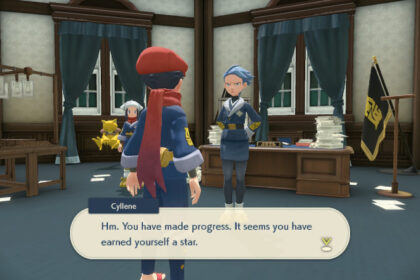Pokémon has always been a very tactical game that emphasized a lot in team building. Your six main Pokémon must be well thought out to deal with the adversaries that are thrown at you along the way.
There are 18 different Pokémon types in Pokémon Legends: Arceus, each with its own strengths and weaknesses.
You can’t carry a Pokémon for each type, so knowing who to bring with you and how to make an effective team composition is very important.
Since you must be ready for most situations, having many Pokémon with overlapping weaknesses and only one or two with varied resistances might cause you to quickly lose a battle and get stuck in some parts of the story.
Here are all the Pokemon Legends: Arceus type matchups & counters, the most important types, and tips on how to play with each in battle.
How Attack and Pokémon Types Work
The best attack types will always depend on the receiving end. When checking your team’s offense and defense, the offense is made by the Pokémon’s moves and the type of those attacks. When it comes to a Pokémon’s defense capabilities, it depends on the creature’s type.
In other words, it doesn’t matter if you are attacking a Grass type Pokémon with a Fire type one. If your attack is of the normal type, you will deal an unaltered amount of damage. However, using a Fire type attack will deal double damage against Grass type Pokémon even if your Pokémon is not of the fire type.
That being said, the table below has all the 18 attack types and what they are strong and weak against. That way, you can use your 6 Pokémon to try to cover as much ground as possible.
Effective, Super Effective, and Not Very Effective Attacks

The attacks in Pokémon can cause different amounts of damage depending on the type of attack that you’re using and the attacked Pokémon’s type.
Some Pokémon might take more damage if they are vulnerable to an attack or half damage if they are resistant. There are even Pokémon that suffer no effect at all from certain attack types.
For instance, Ember, a Fire type attack, deals double damage against Glaceon, an Ice type Pokémon. Similarly, Water Pump, a Water type attack, deals twice as much damage when used against Cyndaquil, a Fire type Pokémon. When it comes to immunity, a good example is how Ghost type Pokémon can’t be affected by Normal type attacks.
When you are battling a Pokémon, you can see which of your attacks are effective against the enemy.
- Ineffective: deals no damage and causes no status effect
- Effective: works normally
- Not very effective: Deals 1/2 damage or less
- Very Effective: Deals double damage or more
Bellow, you can check a table with all 18 attack types and how Pokémon of many types react to it:
| Attack Type | Double Damage to | Half Damage to | Nothing Against |
|---|---|---|---|
| Bug | Grass, Psychic, Dark | Fighting, Flying, Poison, Ghost, Steel, Fire, Fairy | |
| Dark | Ghost, Psychic | Fighting, Dark, Fairy | |
| Dragon | Dragon | Steel | |
| Electric | Flying, Water | Grass, Electric, Dragon | Ground |
| Fairy | Fighting, Dragon, Dark | Poison, Steel, Fire | |
| Fighting | Normal, Ice, Rock, Dark, Steel | Flying, Poison, Bug, Psychic | Ghost |
| Fire | Bug, Steel, Grass, Ice | Rock, Fire, Water, Dragon | |
| Flying | Fighting, Bug, Grass | Electric, Rock, Steel | |
| Ghost | Ghost, Psychic | Dark | Normal |
| Grass | Ground, Rock, Water | Flying, Poison, Bug, Steel, Fire, Grass, Dragon | |
| Ground | Poison, Rock, Steel, Fire, Electric | Bug, Grass | Flying |
| Ice | Flying, Ground, Grass, Dragon | Steel, Fire, Water, Ice | |
| Normal | Rock, Steel | Ghost | |
| Poison | Grass, Fairy | Poison, Ground, Rock, Ghost | Steel |
| Psychic | Fighting, Poison | Steel, Psychic | Ghost |
| Rock | Flying, Bug, Fire, Ice | Fighting, Ground, Steel | |
| Steel | Ice, Rock, Fairy | Steel, Fire, Water, Electric | Poison |
| Water | Ground, Rock, Fire | Water, Grass, Dragon |
You’ve seen what attack types do against many different types of Pokémon, but what are Pokémon resistant to?
In case you are wondering what type to choose for your team, it is important to consider what kind of attack they can withstand.

Here’s a table with all that you need to know about how Pokémon react to each attack.
| Pokémon Type | Takes Double Damage | Takes Half Damage | Has Immunity |
|---|---|---|---|
| Bug | Flying, Rock, Fire | Fighting, Ground, Grass | |
| Dark | Fighting, Bug, Fairy | Ghost, Dark | Psychic |
| Dragon | Ice, Dragon, Fairy | Fire, Water, Grass, Electric | |
| Electric | Ground | Flying, Steel, Electric | |
| Fairy | Poison, Steel | Fighting, Bug, Dark | Dragon |
| Fighting | Flying, Psychic, Fairy | Rock, Bug, Dark | |
| Fire | Ground, Rock, Water | Bug, Steel, Fire, Grass, Ice, Fairy | |
| Flying | Rock, Electric, Ice | Fighting, Bug, Grass | Ground |
| Ghost | Ghost, Dark | Poison, Bug | Normal, Fighting |
| Grass | Flying, Poison, Bug, Fire, Ice | Water, Grass, Electric, Ground | |
| Ground | Water, Grass, Ice | Poison, Rock | Electric |
| Ice | Fighting, Rock, Steel, Fire | Ice | |
| Normal | Fighting | Ghost | |
| Poison | Ground, Psychic | Fighting, Poison, Bug, Grass, Fairy | |
| Psychic | Bug, Ghost, Dark | Fighting, Psychic | |
| Rock | Water, Grass, Fighting, Ground, Steel | Normal, Fire, Poison, Flying | |
| Steel | Fire, Fighting, Ground | Normal, Grass, Ice, Flying, Psychic, Bug, Rock, Dragon, Steel, Fairy | |
| Water | Electric, Grass | Fire, Water, Ice, Steel |
Hybrid Types

Certain Pokémon belong to more than one type, and things can get tricky when that happens. Fortunately, attacks can’t belong to different types. However, we do have to check all the resistances and weaknesses for all types that a Pokémon belongs to.
So, how does that work?
It is more straightforward than it seems. You combine all the multipliers of all types that a Pokémon belongs to in order to figure out how that species reacts to certain types of damage.
Here’s an example:
Graveler is both Rock type and Ground type. As a Ground type Pokémon, it takes double damage from Water, Grass, and Ice type attacks. As a Rock type, it takes only half damage from Water, Grass, Fighting, Ground, Steel.
This is a terrible combination because it means that not only does Graveler combine all those weaknesses. It even stacks the ones that it already has. So it takes double damage from Ice, Fighting, Ground and Steel, but it takes four times as much damage from Water and Grass attacks.
When it comes to damage resistances, Earth type Pokémon take half damage from Poison and Rock attacks while Rock type Pokémon take half damage from Normal, Fire, Poison, and Flying. This means that Graveler takes half damage from Rock, Normal, Fire, and Flying Attacks, but it takes a quarter of the damage from Poison.
Such combinations of weaknesses and strengths on top of Pokémon that can perform attacks that don’t belong to their type add an immense level of complexity to Pokémon battles. Unsurprisingly, it has been one of the most fun aspects of the franchise since it came out.
Final Thoughts

The amount of information can feel overwhelming when it comes to types, weaknesses, and everything else regarding Pokémon matchups.
If you do feel like this is too much, I don’t blame you. It can really be. As someone who is not the most dedicated Pokémon player, I constantly get surprised by an attack that one-shots my Pokémon.
My experience with the franchise is usually enough to slowly learn about all this, but you will constantly have a Pokémon knocked out due to a weakness you didn’t know about, even if you have an overpowered Pokémon.
Still, it does mean that you can do the exact same by learning all about Pokémon types. It feels great to take a Jolteon, and one hit all flying Pokémon in your way to quickly complete many entries in your Pokédex.
Since I don’t care much about Pokémon battles in this game, exploiting other Pokémon Weaknesses is great to quickly farm experience, helping you level up fast.
It also helped me speed through the story mode and beat the main quest much faster. So, if you want to go through the game smoothly or just finally beat that annoying NPC, check on our table the type of the Pokémon you are about to fight. You will find its weaknesses so you can use the most effective Pokémon in your team to easily beat it.






